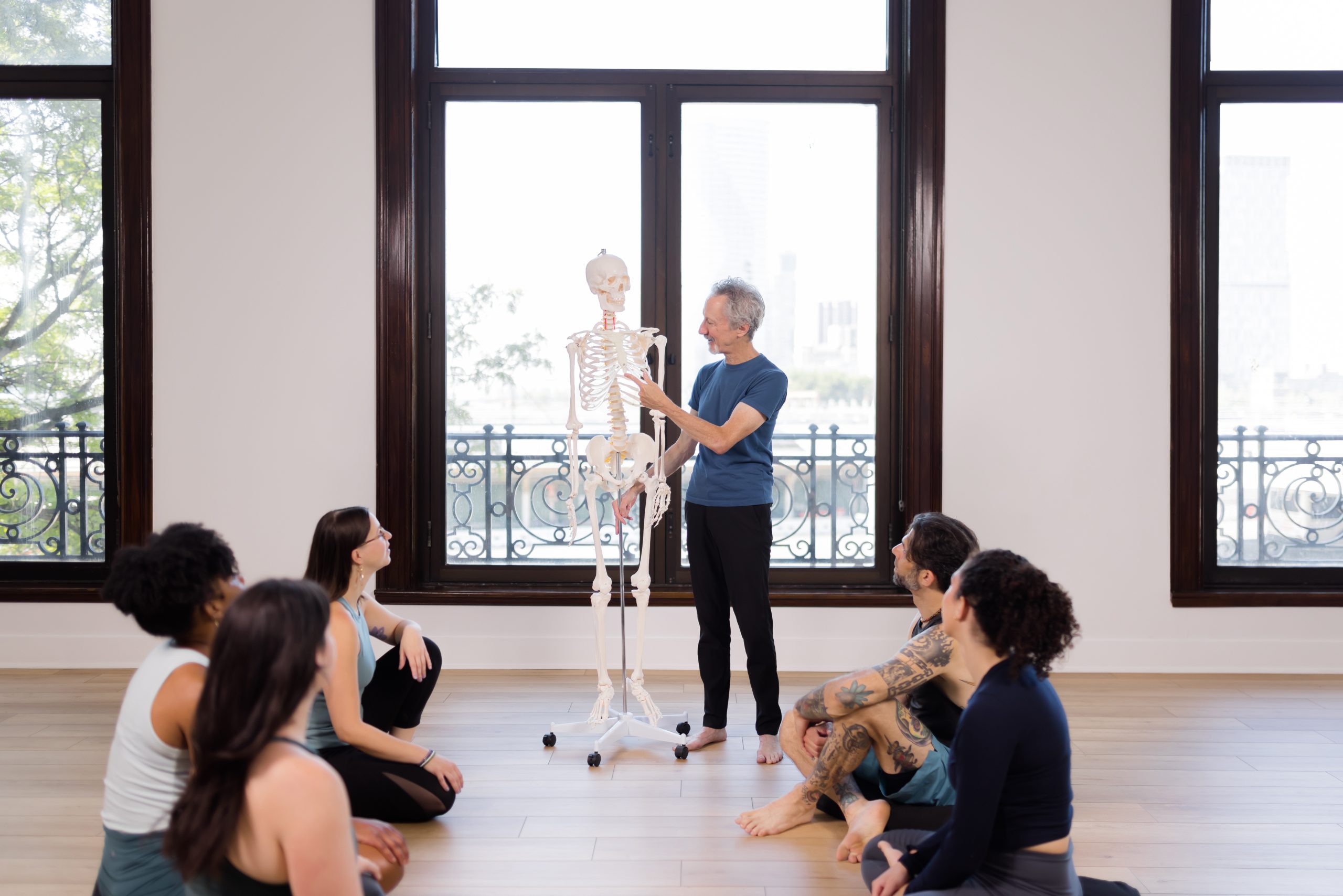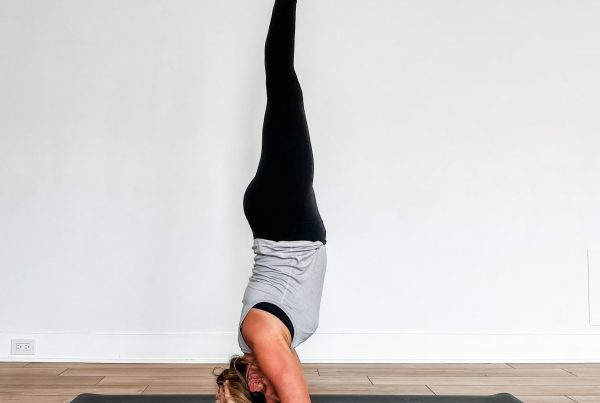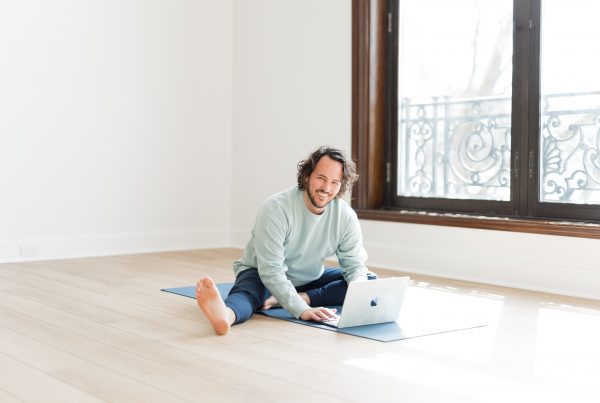
Anatomy can seem intimidating for yoga teachers and practitioners alike — but it doesn’t have to be. A solid understanding of yoga anatomy can deepen your practice, make your teaching safer, and strengthen your connection to your body.
In this article, we’ll explore how learning anatomy enhances your yoga practice — from understanding your skeleton and muscles to appreciating the intricate systems that make movement possible. While this guide focuses on yoga, fitness professionals such as personal trainers may also find these insights valuable.
1. Understand the Human Skeleton
Your skeleton is the foundation of every yoga pose. It supports your body, gives structure to your movement, and protects vital organs.
What many don’t realize is that bones are living tissues — they constantly rebuild and strengthen themselves in response to movement and load. This is why weight-bearing exercise like yoga can help maintain bone density and joint health.
The skeletal system includes not only bones, but also joints, cartilage, and ligaments. When you move through yoga poses — from gentle stretches to balance postures — you’re loading these structures through their full range of motion, which promotes long-term joint resilience and flexibility.
2. Learn How Muscles Work in Yoga
Muscles provide the power behind every asana. Yoga engages all major muscle groups — upper body, core, and lower body — as you transition through sequences like Surya Namaskar (Sun Salutations).
Research from the University of Miami showed that 14 muscle groups are activated during Surya Namaskar A and B, proving just how comprehensive yoga can be as a full-body workout.
By understanding where your major muscle groups are and how they function, you can:
- Target specific areas for strength or flexibility.
- Sequence classes more intelligently.
- Cue movements with anatomical accuracy and safety.
When you know how muscles work, you can move — and teach — with confidence.
3. Explore the Role of the Spine
The spine is the central axis of movement and the protector of the spinal cord. It supports the trunk, shoulder girdle, and head — and plays a key role in every yoga pose, from forward folds to twists and backbends.
Learning about vertebral structure and spinal alignment can help you perform and teach these poses safely and effectively.
Anatomy expert and yoga instructor Joe Miller developed a specialized yoga anatomy series focused on the spine — designed to help practitioners understand how spinal health supports every movement we make.
4. Develop a Newfound Respect for Your Body
The human body is extraordinary. The more you study it, the more you’ll appreciate its brilliance — how bones, muscles, and joints coordinate to create fluid, graceful movement.
As a yoga teacher, this awareness allows you to inspire your students to embrace their bodies — in all shapes, sizes, and abilities — and cultivate self-compassion through practice.
5. Understand How Body Parts Work Together
Nothing in the body functions in isolation. Movement in one area affects the rest, like links in a chain.
This concept, often called kinetic chaining, explains why a misalignment in the hips can influence the knees, or why tight shoulders affect spinal mobility.
By understanding these connections, you can refine your alignment cues and offer modifications that honor each student’s unique anatomy.
6. Discover the Natural Ways Our Bodies Move
Yoga is one of the oldest movement traditions in the world — over 5,000 years old — and it beautifully integrates natural human movement with breath and mindfulness.
Unlike many forms of exercise that emphasize performance, yoga focuses on awareness. The better you understand the anatomy of movement, the more accurately you can sense your body’s position and refine your practice from the inside out.
7. Learn What Yoga Does for the Body and Mind
Yoga unites the body and mind through the breath — a bridge between conscious movement and the autonomic nervous system.
By practicing mindful breathing (pranayama), you can activate the parasympathetic nervous system, helping the body relax, reduce stress, and improve resilience.
Our Yoga Anatomy Course dives deep into:
- The skeletal, muscular, respiratory, and nervous systems
- How the breath connects mind and body
- Interactive quizzes to test your knowledge
Recommended Readings
- Yoga Anatomy – Leslie Kaminoff and Amy Matthews
- Anatomy of Movement – Blandine Calais-Germain
- The Body in Motion: Its Evolution and Design – Theodore Dimon
Recommended Courses
- Yoga Anatomy Course – Deepen your anatomical understanding of yoga
- 200-Hour Online Yoga Teacher Training – Build a strong foundation for teaching
- Breathing 101 – Explore the science of breath and nervous system regulation







